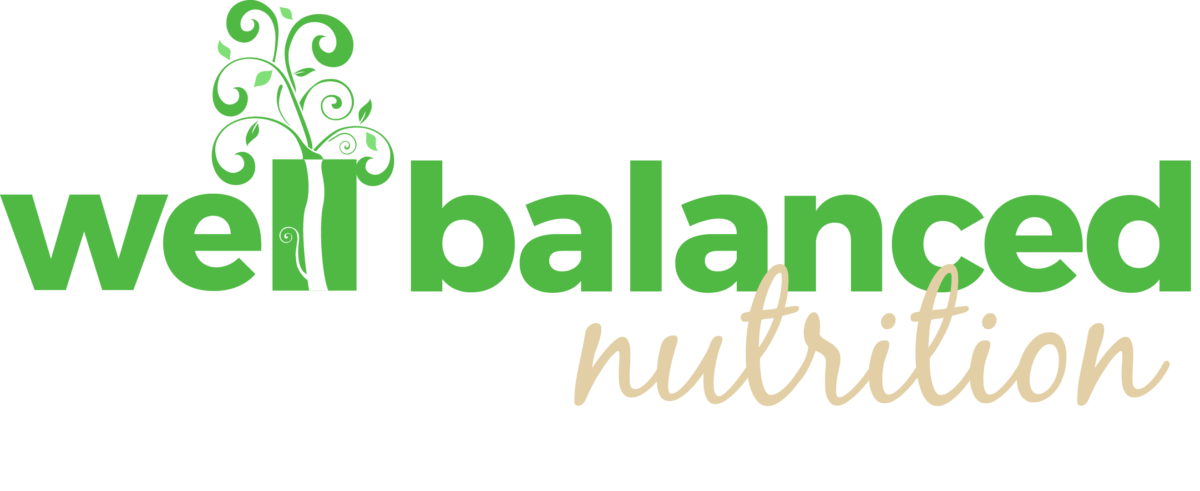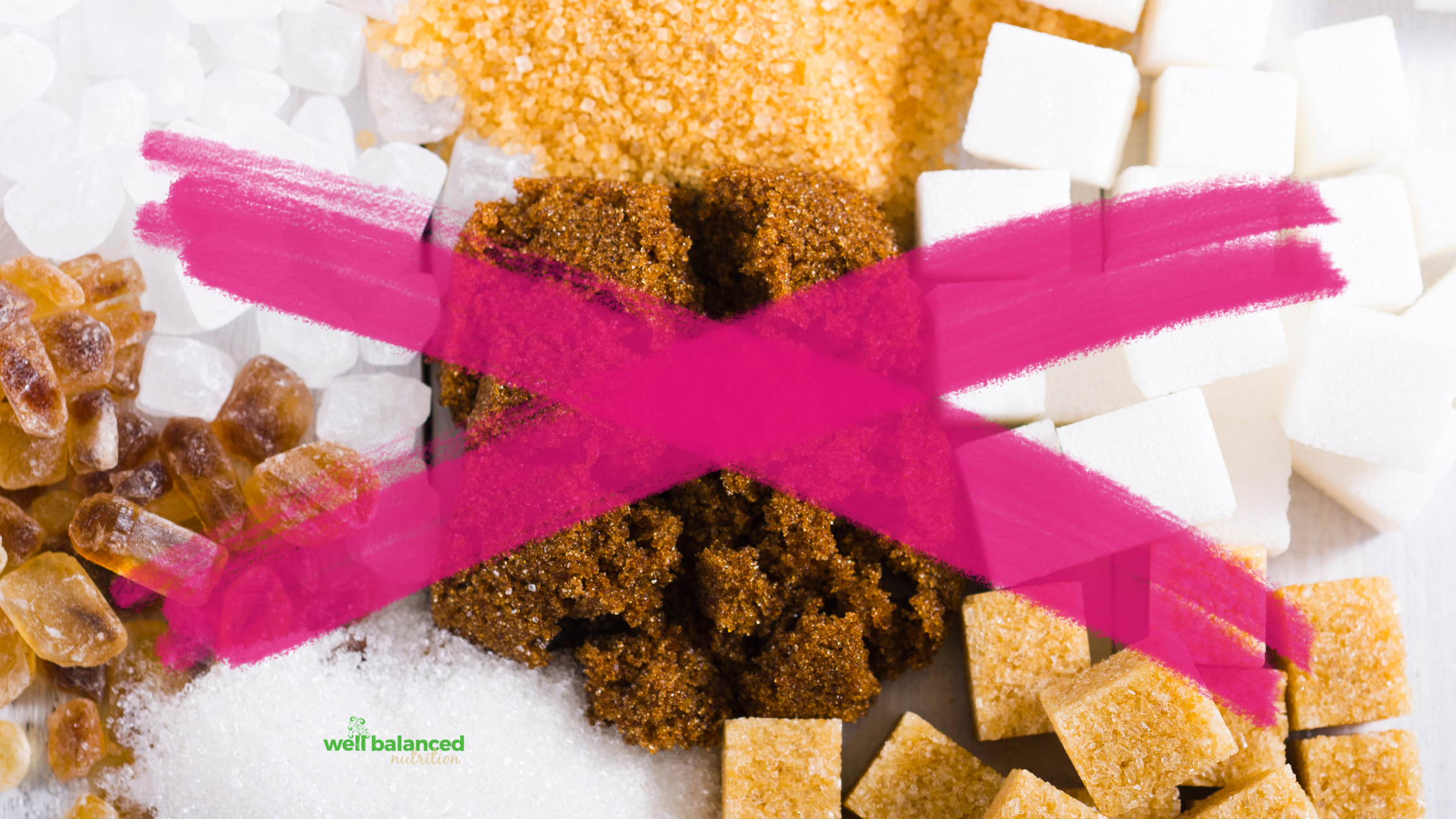Post 3 of 4
Ways to Optimize Your Blood Sugar and Insulin Levels
Hooray! You’ve made it to the third post of the Gimme Some (Science About) Sugar Series. In the last two we’ve discussed how our bodies process sugar, what insulin and insulin resistance mean, and the effects of elevated blood glucose and excess sugar in the body. We’ve learned that too much sugar can have some serious health risks. Although the research linking elevated blood sugar to a wide variety of diseases can be scary, it gives us the knowledge to make choices that promote positive health outcomes. So let’s turn these facts into fuel for a healthier you!
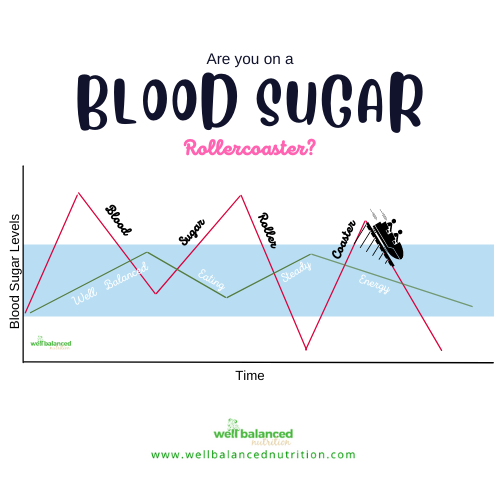
How to Detect Blood Sugar Imbalances
Before we dive into optimizing your blood sugar levels, it’s important to know the common signs that your blood sugar may be on a rollercoaster ride (beyond what is normal after a meal). The common symptoms of blood sugar imbalances include:
- mood swings
- fatigue
- large bursts of energy followed by a crash
- trouble concentrating
- weight gain
- dizziness and headaches
- excessive thirst and excessive urination
- dry skin
- blurry vision
- cravings for sugary foods/drinks
Ways to Optimize Blood Sugar and Insulin Levels
Get Fiber Fueled
Fiber is a term used to describe any type of complex carbohydrate that our bodies cannot digest. Fiber slows the rate of digestion and absorption of carbs. This means your blood sugar will rise more gradually following a meal, and consistent intake of fiber can actually reduce our blood sugar levels in the long run, decreasing the risk of developing diabetes. Carbohydrates that are packed with fiber are always a great choice when you’re choosing a snack or meal planning.
- Examples include raspberries, strawberries, leafy greens, beans and lentils, oats, chia seeds, peas (especially split peas), pears, apples, avocados, and broccoli
Eat Well Balanced Meals
When planning a meal it’s best to have a source of protein, complex carbohydrates, and fat on your plate. Extra bonus points if one or more of the foods you choose is packed with fiber. Each of these nutrients helps stabilize blood sugar levels on their own, but they’re even better together. Team work makes the dream work!
- Well Balanced Meal examples:
- veggie omelette with whole wheat avocado toast
- grilled chicken breast, a baked potato, and roasted carrots
- black bean burger on a whole wheat bun with a side salad
- Snack examples:
- apple with peanut butter
- veggies with hummus or yogurt dip
- trail mix with dried fruit
Watch Your Added Sugar Intake
To clarify, added sugar is anything that isn’t already in our foods (fruits, vegetables, and dairy products have natural sugars in them already), so when we talk about added sugar we are NOT referring to these. However, any type of sugar (table sugar, brown sugar, syrups, etc.) that is added to a food or dish for flavor purposes, is the added sugar we must be aware of.
- Recommendations vary. The Dietary Guidelines Advisory Committee recommends that less than 6% of daily calories come from added sugars to achieve a balanced diet that is nutritionally abundant. The World Health Organization recommends 10% of your daily calories. Lastly, the American Heart Association breaks it down for men and women.
- Plan out your meals and snacks so you can gauge how much added sugar is in your week ahead
- Avoid sugary drinks like sodas, juices with added sugar, or coffee/energy drinks loaded with sweet syrups
- Enjoy sweets in moderation
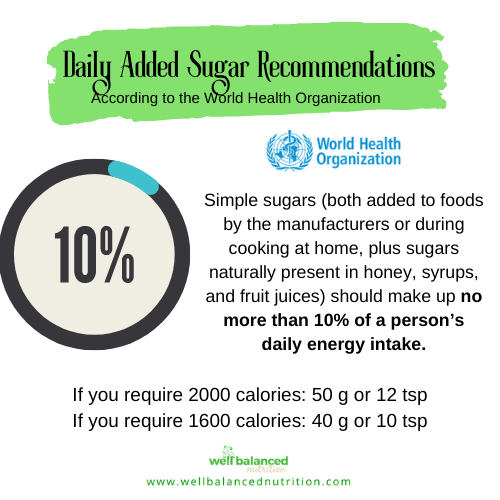
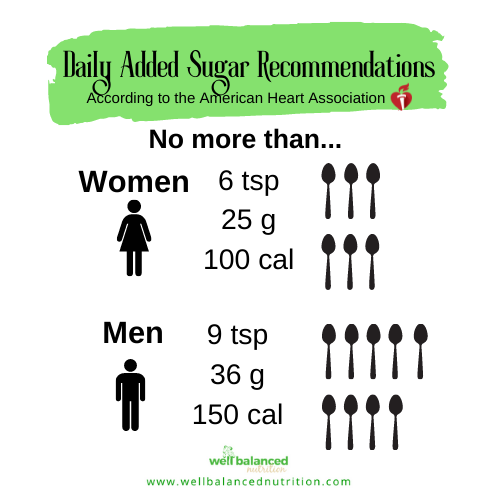
Move After a Meal
Research has shown that movement after eating can help reduce the spike in blood sugar. Sports Medicine recently published a scientific review of over 50 studies analyzing how single bouts of exercise help control post-meal blood sugar. The review found that a single bout of aerobic exercise (aka cardio) resulted in lower blood sugar levels. The best part? The exercise only had to be about 30 minutes in length and still had optimal effects as long as it occurred within 6 hours of eating!
- Exercise ideas:
- Take a walk on your lunch break after you eat
- Ride a bike whenever possible if you’re going out to eat, that way you have to ride it home after eating
- Plan to eat before working out to not only fuel your muscles, but to optimize your blood sugar and insulin levels
- Have a family dance party after eating
If you’ve made it through all 3 posts, thank you, and consider yourself a sugar specialist! However, our work here isn’t done yet. In the next (and last) post we are going to cover the different types of carbohydrates and discuss processed vs. natural sugars. See you next week!
